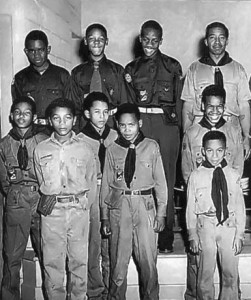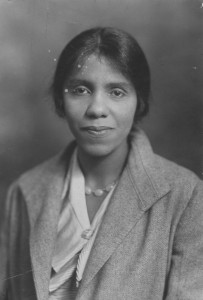MWAA Skirts Minority Contracting Suppresses Wages and Undermines Security
October 16, 2010
Thursday the Metropolitan Washington Airport Authority held its 20th Annual Business Opportunity Seminar to attract minority and women entrepreneurs as well as local disadvantaged businesses (LDBs). The problem is its all smoke and mirrors with few contracts going to either minority or women entrepreneurs. The lions share are awarded to “local disadvantaged businesses,” i.e. the good old boys who consistently and overwhelming manage to beat out other qualifying bidders. LDBs usually skim off the cream of these lucrative contracts leaving the curds of low wages and inadequate benefits to seep down to the Black and Latino work force. Senator Rockefeller has recently called for a top to bottom investigation of MWAA contracting practices. This would be the first step toward necessary reform and real equal opportunity.
Senator Rockefeller should begin by reviewing security contracting. Infrastructure security at Reagan National Airport is supported by an unarmed guard force of 40 officers. Five years ago MWAA awarded contract oversight to a Maryland company Master Security. Prior to this award under the company Securiguard officers enjoyed satisfactory benefits and pay. Before the recession Master Security came in immediately cut pay and benefits with MWAA approval and has since refused to grant pay raises or cost of living increases during its 5 year tenure.
The officers organized a collective bargaining unit. Many work long hours sometimes 16 to 18 hour shifts in inclement weather yet they have no sick leave or night differential pay and nor other standard benefits enjoyed by most contract security officers. They have no pension or retirement plan. The situation at Reagan National is particularly untenable because the officers are paid well below the regions prevailing wage standard earning only $12.50 an hour while the prevailing wage is $21.26.
The Reagan officers are paid far below the prevailing wage standard. This deprives them of the ability to maintain comfortable living standards adversely impacting the region. Moreover paying low wages forces MWAA to rely on immigrant workers. This increased reliance diminishes the quality of infrastructure security with lower standards and greater exposure to threats from both outside and within.
MWAA enjoys a unique status an as a recipient of federal funds. It is for the most part a government contractor and as such should be a model employer yet it routinely violates prevailing wages laws. Prevailing wage laws set the floor for wages, overtime pay, training, pension plans, health insurance other benefits paid to workers on public financed jobs.
The cost of living in the Washington metropolitan region is high. The Reagan officers are demanding to be paid the prevailing wage to keep pace with rapidly increasing transportation and subsistence costs. Without the necessary increase workers will be forced to move outside the Beltway for cheaper housing thus incurring higher transportation costs.
MWAA by failing to observe the prevailing wage law jeopardizes airport security and diminishes regional living standards. Enough with the annual dog and pony show touting equal opportunity. MWAA should award contracts to minority and woman owned businesses as mandated by federal law and stop the charade.
Outsourcing and Declining Wages: The Duped American Worker
September 28, 2010
It is now clear that the accelerated shifting overseas of technical and white-collar jobs undercuts upward mobility for American workers. Politicians, pundits and even some economist are now having second thoughts about free trade-agreements that protect the rights of investors but not the rights of labor. Conservatives have since before the days of Ronald Reagan continued to echo the same refrain: Government is the enemy of the people. This has lead to three decades of eroding government regulation in favor of an unfettered free market rule which ultimately brought the nation to the brink of financial collapse.
Labor unions have been weakened while manufacturing jobs have gone abroad. The educational system is failing while teachers and their unions are being demonized. Outsourcing jobs, harassing labor unions, repealing safety regulations, and undercutting benefits: all of which became the order of the day during the Reagan-Bush era. And now approaching midterm elections we stand poised to put he same players with the same strategy back into the game.
To those players the free market means having free reign to advance their interest at the expense of consumers and workers, the people. It’s been shown time again Wall Street, bankers, and corporations’ only concern is the bottom line. Their self-serving policies have proven disastrous to the economy, the environment, and the American middle class. The very same conservatives who favor tax cuts for the wealthy oppose extending unemployment benefits for the long term unemployed. Yet many Americans continue to vote against their own interest unknowingly lied to and manipulated by the top wealthy 3% who use their money to control the media and the message.
One-third of American workers say they would join a union if they had a chance, and over half support collective bargaining. Yet only 13 percent are union members because existing law make it difficult. Meanwhile companies like Wal-Mart paying low wages thrive and expand abroad. Once one of the most effective lobbying machines was that of organized labor, but unions too have not faired well under conservative domination. Government is not the enemy but the wealthy conservatives who use the media to misinform and mislead American voters.
It is absolutely essential American workers make their elected officials accountable to them and not special interests lobbyists. We are at a cross road and Americans must show solidarity if we want a government for the people and by the people not corporate interest. Government is not the enemy. Corporate greed is.
Diversity and Tolerance
September 18, 2010
Many believed the election of an African American President ushered in the new age of a post racial American society, one of diversity and tolerance with global impact. Well into Obama’s first term we have witnessed anything but tolerance and acceptance of cultural, racial and religious differences. Unfortunately society’s ingrained prejudices will likely take generations to eradicate. It took 400 years to make racial equality a matter of policy in the United States. A major battle tackling racism came on the education front with the 1954 Brown decision outlawing segregated schools eliminating an impediment to economic progress for many and making great strides in American society. Through desegregation school kids actually experienced diversity and tolerance in their everyday lives. Mere association alone cannot remove entrenched ideology in the war on racism and xenophobia, but the education battlefront remains the best theatre. Teaching tolerance and diversity as part of the curriculum has proven to be an effective strategy in targeting early childhood development. Teaching tolerance in elementary schools reduces the incidence of hate crimes, racism, discrimination and bigotry.
Similarly on the march of progress religious intolerance remains another battlefront. How do we educate the public to understand and respect the various religions of the world? The Establishment Clause of the First Amendment prohibits the establishment of a national religion by the Congress or the preference of one religion over another, and at the same time insuring religious freedom. It further outlaws teaching religion or what is known as “excessive entanglement” in the public schools. Public schools did much to eradicate racial discrimination but as for religious instruction there is a laissez-faire policy. When it comes to educating the public the society’s youth remains the better students. By adulthood bias and prejudice become entrenched and are less likely to be questioned.
In 1992, the American Bar Association’s Young Lawyers Division (YLD) launched four Tolerance Education pilot projects in elementary schools, middle schools, high schools, and colleges throughout the country. The ABA offered a Strategy for Teaching Diversity and Tolerance in schools recognizing children are aware of racial and gender differences at a very young age, and by age twelve they have formed stereotypes. In fact, recent studies show that tolerance education is most effective between the ages of four and nine years. Therefore, it is important to teach tolerance to young children and continue reinforcing the message over time. Age-appropriateness is involved in the creation of the different curricula that educators have developed. For instance, part of the curriculum includes classroom exercises from newsletters and newspaper sections directed toward younger audiences. Additional methods include short theatrical productions and role-playing exercises. Such programs give students a greater understanding of discrimination and prejudice.
Why not incorporate Diversity and Tolerance as part of a civics curriculum nationwide? Granted, States like Texas where political ideology controls curriculum would probably oppose it. Nevertheless its certain, diversity builds a stronger society, tolerance advances democracy, and compassion is essential for a better world.
Raising Black Boys: Back To Basics
September 3, 2010
- Boy Scout Troop 107, Steeltown, PA
When I entered the fifth grade I was finally old enough and couldn’t wait to join the Boy Scouts. The uniforms were cool and scouts got to go camping and learned all sorts of neat things. I was ready on that early autumn Tuesday evening. My father chaperoned me to my first meeting. Briefly interviewed by the Scout Master this 10 year old boasted of his ability to recite the oath and the law. The mission of the Boy Scouts of America is to prepare young people to make ethical and moral choices over their lifetimes by instilling in them the values of the Scout Oath and Law.
The Scout Master was impressed with my precocious gung ho attitude while my father concealed his embarrassment mingled with pride. He knew my choosing this experience was important to me and he respected it. As a young boy few things interested me and I remember the excitement at the arrival of my monthly Boy’s Life magazine; picking out my first uniform at the J.C. Penny’s. By rout memory I learned the Scout law: to be Trustworthy, Loyal, Helpful, Friendly, Courteous, Kind, Obedient, Cheerful, Thrifty, Brave, Clean and Reverend. I now realized these lofty ideals would help shape my character and outlook and resonating throughout my life.
In recent summers I witness throngs of Boy Scouts touring the city during the annual summer jamborees at AP Hill. I can’t honestly say I remember seeing an African American scouts among the hundreds. Back in my day at the annual exposition held at the Armory there were several local African American troops with exhibit booths. I wonder how many African American Boy Scout troops exist across the states today–probably not many. Things are different now. I belonged to an African American troop at Hopkins House in Alexandria. The Boy Scouts like every other American institution has a history of discrimination and segregation.
Since the civil rights movement and integration African American communities have undergone a transformation. The village concept of the community’s sense of solidarity forged by a history of Jim Crowism and segregation all built around churches and schools have been lost. Looking back the Boy Scout experience was fundamental to my education. Today’s kids may be consumed with skate boars, video games, sports, and hip hop music all of which might offer some valuable training. But what builds character?
Around age ten is a critical time in a boy’s life. Some have the idea that raising boys requires less nurturing than girls; the notion that boys will somehow take care of themselves. An intended benefit of nurturing is the building of character a task the communities have been neglecting evidenced with more young men in jail than college or gainfully employed. We have somehow lost our boys to the transformation. We can regain them and save the future by getting back to basics. What better curriculum than the Boy Scout laws.
Juliette Derricotte: Remembering Healthcare Denied
August 27, 2010
As told by Langston Hughes in November 1931 Juliette Derricotte was driving with three of her students from Fisk University in Nashville to her parent’s home in Georgia. Suddenly an approaching car, in order to pass a slower vehicle swerved toward the center of the road. Miss Derricotte, to avoid a collision, turned quickly to the side of the highway. Her wheels sank into a ditch, and her car turned over. The three students accompanying the Dean of Women were all badly injured. Passing motorists carried them into the nearest town, a small southern farming center. Here the white hospital refused point blank to give treatment to African-Americans, so the bruised and bleeding victims were not admitted. Instead they we taken to the house of a poor black woman of the town and there white doctors gave them attention, but without the necessary instruments and anesthetics that the hospital could have furnished.
Three of them were suffering intensely, but the least injured of the four, a young student was able to find a telephone. He called the nearest city in which a Negro hospital was located, and asked that an ambulance be sent for them. Late in the night the ambulance arrived, but on the way to the distant Negro hospital Juliette Derricotte died. A brilliant woman with much to offer was lost to America. Had not a white hospital refused to treat black people—even in so grave an emergency as this serious automobile accident—her life might have been saved.
Derricotte is most remembered today for her death and the national outrage it caused leading to a series of investigations; the NAACP became involved; the Commission of Interracial Co-operation of Atlanta made an investigation at the request of Fisk University and other organizations. Early in her career she worked with the YWCA traveling the globe studying in England and immersing herself in foreign cultures of India, Sri Lanka, and Burma. Through these experiences she was touched and transformed returning to Fisk University bringing her sense of global humanity and desire for a more just and human society.
Disparities persist in African-American health care while no longer a matter of overt discrimination the negative entrenched impact lingers. The burden of death and living remains far greater for people of color. In the United States, health disparities are well documented in minority populations such as African Americans, Native Americans, Asian Americans, and Latinos. When compared to whites, these minority groups have higher incidence of chronic diseases, higher mortality, and poorer health outcomes. Among the disease-specific examples of racial and ethnic disparities in the United States is the cancer incidence rate among African Americans, which is 10% higher than among whites. In addition, adult African Americans and Latinos have approximately twice the risk as whites of developing diabetes. Minorities also have higher rates of cardiovascular disease, HIV/AIDS, and infant mortality than whites.
While time chips away at the root causes of disparate health care Juliette Derricotte’s life and death endures as a reminder that universal health care should be a global concern, a human right and not a privilege.






